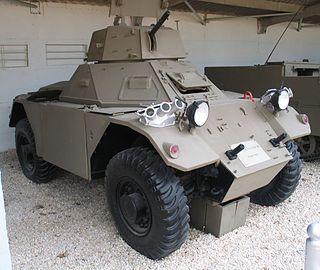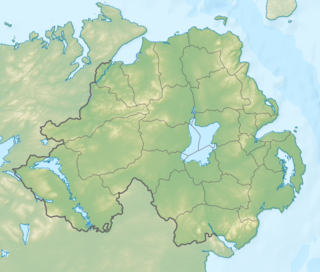 W
WThe Ulster Defence Regiment (UDR) was an infantry regiment of the British Army established in 1970, with a comparatively short existence ending in 1992. Raised through public appeal, newspaper and television advertisements, their official role was the "defence of life or property in Northern Ireland against armed attack or sabotage" but unlike troops from Great Britain they were never used for "crowd control or riot duties in cities". It was the largest infantry regiment in the British Army, formed with seven battalions plus another four added within two years.
 W
WOn 7 March 1976 a car bomb exploded outside the Three Star Inn pub, in Castleblayney, County Monaghan, killing one man and injuring 17 other people. The attack has been attributed to the Glenanne gang
 W
WOn 2 May 1974 the Provisional Irish Republican Army (IRA) attacked a British Army base manned by the Ulster Defence Regiment (UDR) near the Northern Ireland–Republic of Ireland border at Clogher, County Tyrone. The IRA unit engaged the small base with automatic weapons, rockets and improvised mortars. Ferret armoured cars were deployed to the scene and a fierce firefight erupted. The IRA withdrew behind the border with the Republic. The assault on the outpost killed greenfinch Eva Martin and wounded another UDR soldier.
 W
WDuring the evening of 19 December 1975, two coordinated attacks were carried out by the Ulster Volunteer Force (UVF) in pubs either side of the Irish border. The first attack, a car bombing, took place outside Kay's Tavern, a pub along Crowe Street in Dundalk, County Louth, Republic of Ireland - close to the border. The second, a gun and bomb attack, took place at Donnelly's Bar & Filling Station in Silverbridge, County Armagh, just across the border inside Northern Ireland. The attack has been linked to the Glenanne gang, a group of loyalist militants who were either members of the UVF, the Ulster Defence Regiment (UDR), the Royal Ulster Constabulary (RUC) and the closely linked UVF paramilitary the Red Hand Commando (RHC), some of the Glenanne gang were members of two of these organizations at the same time like gang leaders Billy Hanna who was in both the UVF and the UDR and who fought for the British Army during the Korean War and John Weir who was in the UVF and was a sergeant in the RUC. At least 25 UDR men and police officers were named as members of the gang. The Red Hand Commando claimed to have carried out both attacks.
 W
WThe Glenanne barracks bombing was a large truck bomb attack carried out by the Provisional IRA against a British Army base at Glenanne, near Mountnorris, County Armagh. The driverless lorry was rolled down a hill at the rear of the barracks and crashed through the perimeter fence. The bombing took place on 31 May 1991 and left three soldiers killed and 14 people wounded, four of them civilians.
 W
WThe Glenanne gang or Glenanne group was a secret informal alliance of Ulster loyalists who carried out shooting and bombing attacks against Catholics and Irish nationalists in the 1970s, during the Troubles. Most of its attacks took place in the "murder triangle" area of counties Armagh and Tyrone in Northern Ireland. It also launched some attacks elsewhere in Northern Ireland and in the Republic of Ireland. The gang included British soldiers from the Ulster Defence Regiment (UDR), police officers from the Royal Ulster Constabulary (RUC), and members of the Mid-Ulster Brigade of the Ulster Volunteer Force (UVF). Twenty-five British soldiers and police officers were named as purported members of the gang. Details about the group have come from many sources, including the affidavit of former member and RUC officer John Weir; statements by other former members; police, army and court documents; and ballistics evidence linking the same weapons to various attacks. Since 2003, the group's activities have also been investigated by the 2006 Cassel Report, and three reports commissioned by Irish Supreme Court Justice Henry Barron, known as the Barron Reports. A book focusing on the group's activities, Lethal Allies: British Collusion in Ireland, by Anne Cadwallader, was published in 2013. It drew on all the aforementioned sources, as well as Historical Enquiries Team investigations. The book was the basis for the 2019 documentary film Unquiet Graves, directed by Sean Murray.
 W
WThe Ulster Defence Regiment (UDR) was an infantry regiment of the British Army established in 1970, with a comparatively short existence ending in 1992. Raised through public appeal, newspaper and television advertisements, their official role was the "defence of life or property in Northern Ireland against armed attack or sabotage" but unlike troops from Great Britain they were never used for "crowd control or riot duties in cities". It was the largest infantry regiment in the British Army, formed with seven battalions plus another four added within two years.
 W
WThe Miami Showband killings was an attack on 31 July 1975 by the Ulster Volunteer Force (UVF), a loyalist paramilitary group. It took place on the A1 road at Buskhill in County Down, Northern Ireland. Five people were killed, including three members of The Miami Showband, who were one of Ireland's most popular cabaret bands.
 W
WThe Mullacreevie ambush took place on 1 March 1991, when a mobile patrol of the Ulster Defence Regiment composed of two Land Rover vehicles was attacked by a Provisional IRA active service unit with an improvised horizontal mortar while passing near Mullacreevie housing estate, on the west side of Armagh City. One member of the UDR was killed instantly when the leading Land Rover was hit, while another died of wounds two days later. Two other soldiers were maimed for life.
 W
WThe Shorland is an armoured patrol car that was designed specifically for the Royal Ulster Constabulary by Frederick Butler. The first design meeting took place in November 1961. The third and final prototype was completed in 1964 and the first RUC Shorlands were delivered in 1966. They were reallocated to the Ulster Defence Regiment in 1970. The Royal Ulster Constabulary soon replaced the Shorland with an armoured Land Rover with more conventional profile and no machine gun turret.
 W
WThiepval Barracks in Lisburn, County Antrim, is the headquarters of the British Army in Northern Ireland and its 38th (Irish) Brigade.
 W
WUlster Defence Regiment battalions were located throughout Northern Ireland. The bases were a mix of regimental, battalion, company and platoon locations.
 W
W W
W W
W